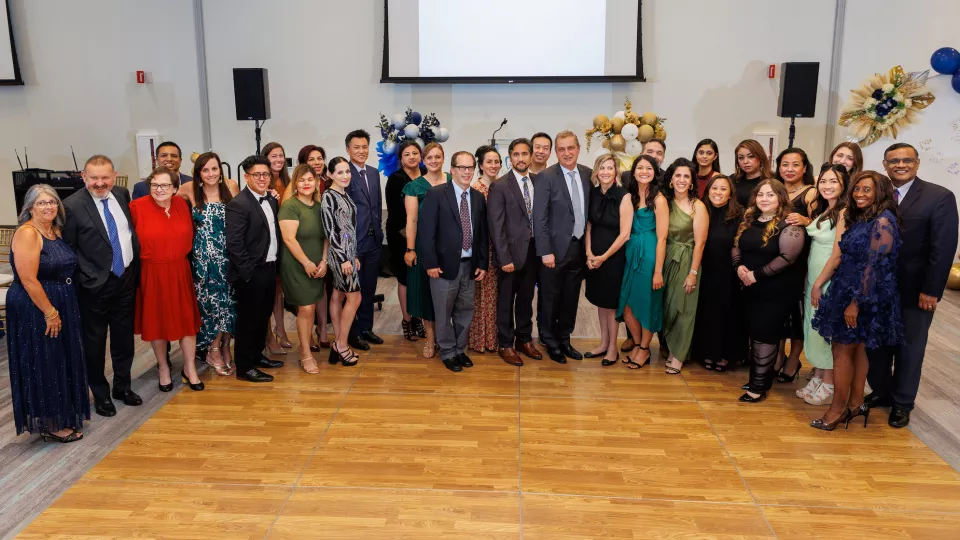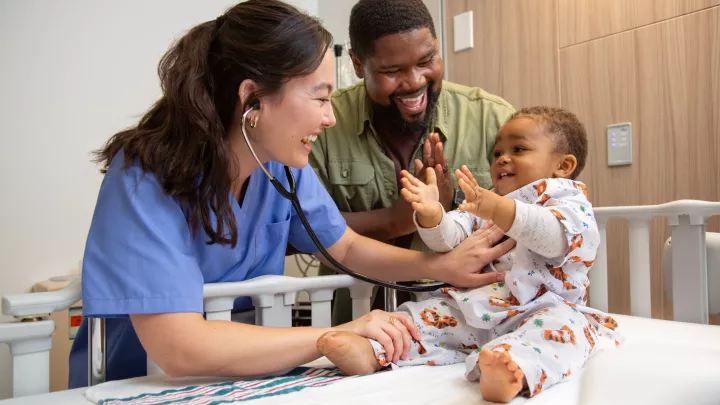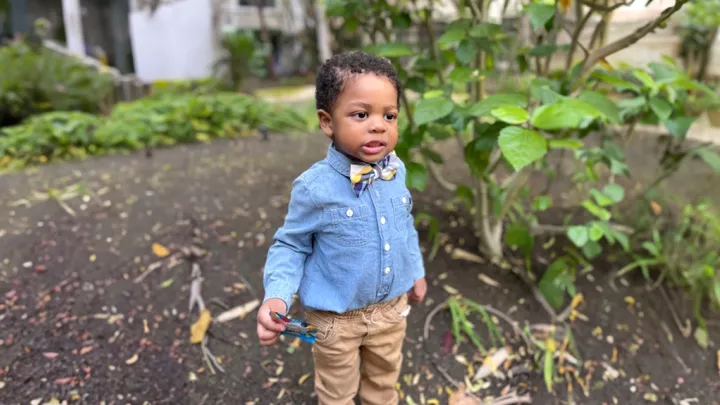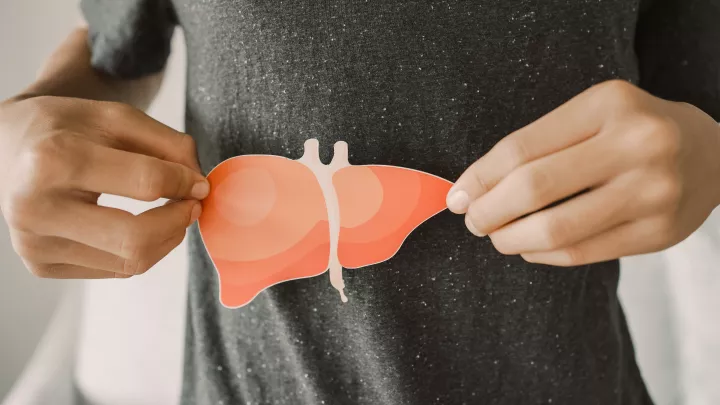
Liver Transplant Program team members from Children’s Hospital Los Angeles at the program’s 25th anniversary event
Children’s Hospital Los Angeles Performs 500th Liver Transplant
LOS ANGELES (Jan. 3, 2024) – Children’s Hospital Los Angeles has performed its 500th liver transplant—a milestone achievement that only a handful of pediatric centers in the country have reached.
“This is a tremendous accomplishment for our team, but it is more than a number,” says Yuri Genyk, MD, Chief of the Division of Abdominal Organ Transplantation and Associates Chair in Transplant Surgery at Children’s Hospital Los Angeles. “Behind those 500 transplants are 500 children who have had a chance to grow up and pursue their dreams. To be part of that is immensely rewarding.”
The successful procedure, which involved a living donor, comes on the heels of the 25th anniversary of the Liver Transplant Program, which the hospital celebrated in September 2023.
Living donors shorten wait times
CHLA performed its first liver transplant in 1998. Today, the program is one of the largest in the country, performing an average of 25 to 30 liver transplants each year.
That high volume is paired with excellent outcomes, including one-year patient and graft survival rates of 100%.
“From the start, we have focused on providing superb quality of care and outstanding outcomes after transplant,” says Dr. Genyk, who has led the program since its inception. “That takes an enormous amount of expertise and dedication from multidisciplinary teams across Children’s Hospital. Our success speaks to the excellence of our entire institution.”
One of the program’s key strengths is its expertise in living donor transplants. Although living donors are common in kidney transplants, far fewer pediatric centers offer them for the liver, as liver donation is a much more complex surgery.
In the procedure, surgeons remove a section of liver from a healthy adult donor and transplant it into the child. After a few months, the donor’s liver re-grows to its original size. The transplanted organ also grows to fit the child’s body.
CHLA has long been a national leader in this area, with roughly one-third of its liver transplants coming from living donors. A living donor is often a parent or family member, and that eliminates the long wait for a matched deceased donor organ to become available. It's also a key reason why the hospital's median wait time for a new liver is less than half the regional average.
“A living donor allows a child to receive a lifesaving organ much faster,” says Beth Carter, MD, Section Chief, Hepatology, and Medical Director of the Liver Transplant Program. “That’s important because children with liver failure can become critically ill very quickly. With a living donor, we can perform a transplant when the child is as healthy as possible.”
That can lead to better outcomes as well. “Our research has found that children who receive living donor organs have half the risk of dying—and half the rejection—compared with those who receive livers from deceased donors,” notes Rohit Kohli, MBBS, MS, Chief of the Division of Gastroenterology, Hepatology and Nutrition at CHLA.
Innovations in care
The team is also working to continually improve liver care for children. For example, the hospital has created a groundbreaking protocol that helps to promote faster recovery in children after their transplant.
This past year, the group also developed an artificial intelligence tool that can predict whether patients with acute liver failure—which develops suddenly in otherwise healthy children—will need a transplant.
In addition, CHLA investigators are at the forefront of novel research into the most common conditions that lead to liver transplant in children—and are studying how to better predict and treat liver transplant rejection.
“The goal is for every child’s liver transplant to last a lifetime, but also to help more children avoid a transplant altogether,” says Dr. Kohli, who is also Associates Chair in Liver and Intestinal Research at CHLA.
The group is planning an official 500th celebration later this month, when it will join with King’s College London faculty in Los Angeles to host a continuing medical education event for physicians on liver disease in children. Meanwhile, the program marked its 25th anniversary in the fall—reuniting past and present care team members, as well as grateful patients and families, for the event.
“It was amazing to see children we operated on so many years ago, grown up and thriving,” says Dr. Genyk. “It’s a feeling of accomplishment. It is not just that we have given meaning to our patients’ lives. They have given meaning to ours.”
Learn more about the Liver Transplant Program at Children’s Hospital Los Angeles.
About Children’s Hospital Los Angeles
Founded in 1901, Children’s Hospital Los Angeles is at the forefront of pediatric medicine and is the largest provider of hospital care for children in California. Children’s Hospital is home to renowned experts who work together across disciplines to deliver inclusive and compassionate care, and drive advances that set pediatric standards across the nation and around the globe. Children’s Hospital Los Angeles delivers a level of care that is among the best in the world for a truly diverse population of children. The hospital is consistently ranked in the top 10 in the nation on U.S. News & World Report’s Honor Roll of Best Children’s Hospitals, including No. 1 in California and No. 1 in the Pacific U.S. region. Children’s Hospital Los Angeles embraces the hospital’s mission to create hope and build healthier futures. Children’s Hospital Los Angeles is among the top 10 children’s hospitals for National Institutes of Health funding. The Saban Research Institute of Children's Hospital Los Angeles supports the full continuum of research, allowing physicians and scientists to translate discoveries into treatments and bring answers to families faster. The pediatric academic medical center also is home to one of the largest training programs for pediatricians in the United States. And the hospital’s commitment to building strong communities is evident in CHLA’s efforts to fight food insecurity, enhance health education and literacy, and introduce more people to careers in health care. To learn more, follow CHLA on Facebook, Instagram, LinkedIn, YouTube and X, formerly known as Twitter, and visit CHLA.org/blog.


